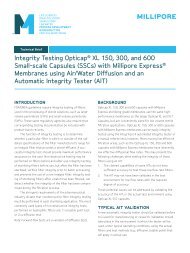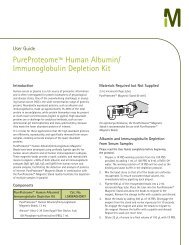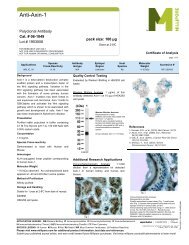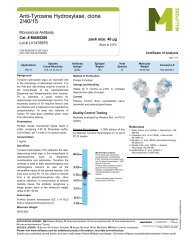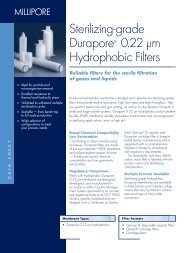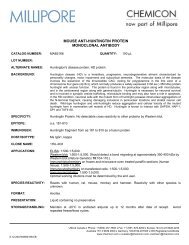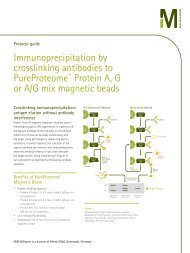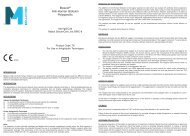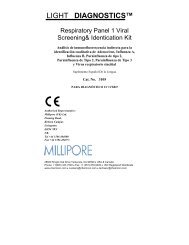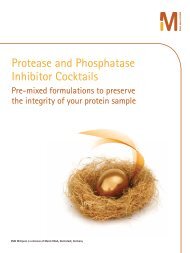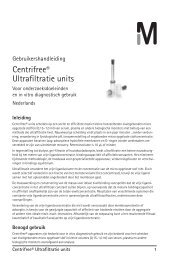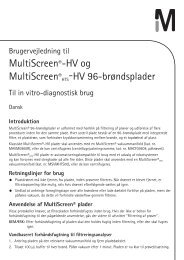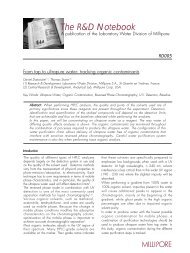Millistak+HC AppGd_textC.qxd - Millipore
Millistak+HC AppGd_textC.qxd - Millipore
Millistak+HC AppGd_textC.qxd - Millipore
You also want an ePaper? Increase the reach of your titles
YUMPU automatically turns print PDFs into web optimized ePapers that Google loves.
Evaluation and<br />
Optimization<br />
Separation Mechanisms<br />
The particle removal achieved by<br />
Millistak+ HC filters is the consequence<br />
of two distinct separation mechanisms.<br />
The first of these mechanisms is<br />
mechanical sieving, in which particles<br />
are captured within the prefilter due to<br />
their physical size and/or orientation.<br />
In the case of a depth filter, the path<br />
through the media matrix is tortuous<br />
and varies greatly in effective pore<br />
dimensions, providing ample opportunity<br />
for particle retention by entrapment.<br />
The outward effect, typical of<br />
most filters, is a build-up in pressure<br />
differential in the direction of flow.<br />
The second particle capture<br />
mechanism for Millistak+ HC filters<br />
is adsorption: the physical/chemical<br />
binding of particles to the filter media.<br />
This process is aided by the net<br />
positive charge on the surface of the<br />
Millistak+ HC filter media. Colloidal<br />
particles in a biological suspension<br />
(cell wall fragments, agglomerated<br />
proteins, polynucleic acids, etc.)<br />
exhibit a net negative electrostatic<br />
charge on their surface at typical<br />
near-neutral pH conditions. The<br />
cationic charge on the Millistak+ HC<br />
filter media allows these particles to<br />
be captured, when otherwise they<br />
might escape retention due to their<br />
small size.<br />
This electrostatic retention mechanism<br />
allows the Millistak+ HC prefilter<br />
to be effective in removing particles<br />
well below the smallest pore size<br />
of the media and thereby provides<br />
additional protection to the sterile filter.<br />
This capture mechanism does not<br />
however reveal itself as a pressure<br />
build-up on the prefilter. Instead, the<br />
user must carefully monitor the quality<br />
of the filtrate, to detect the point at<br />
which all available adsorption sites<br />
within the media have been used.<br />
This can be done either by monitoring<br />
filtrate turbidity in relation to process<br />
throughput or by measuring the<br />
capacity of the downstream sterile<br />
filter in situ or off-line (with a post-run<br />
Vmax SM test).<br />
Depending on the properties of<br />
the feed stream (and the consequent<br />
relative contribution of the two separation<br />
mechanisms described above),<br />
two distinct types of behavior may<br />
be observed for the Millistak+ HC<br />
prefilter. These two distinct profiles<br />
Millistak+ HC Filters Application Guide 15



